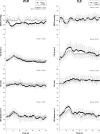Single passive leg movement assessment of vascular function: contribution of nitric oxide
- PMID: 28860173
- PMCID: PMC5814686
- DOI: 10.1152/japplphysiol.00533.2017
Single passive leg movement assessment of vascular function: contribution of nitric oxide
Abstract
Broxterman RM, Trinity JD, Gifford JR, Kwon OS, Kithas AC, Hydren JR, Nelson AD, Morgan DE, Jessop JE, Bledsoe AD, Richardson RS. Single passive leg movement assessment of vascular function: contribution of nitric oxide. J Appl Physiol 123: 1468-1476, 2017. First published August 31, 2017; doi:10.1152/japplphysiol.00533.2017.-The assessment of passive leg movement (PLM)-induced leg blood flow (LBF) and vascular conductance (LVC) is a novel approach to assess vascular function that has recently been simplified to only a single PLM (sPLM), thereby increasing the clinical utility of this technique. As the physiological mechanisms mediating the robust increase in LBF and LVC with sPLM are unknown, we tested the hypothesis that nitric oxide (NO) is a major contributor to the sPLM-induced LBF and LVC response. In nine healthy men, sPLM was performed with and without NO synthase inhibition by intra-arterial infusion of NG-monomethyl-l-arginine (l-NMMA). Doppler ultrasound and femoral arterial pressure were used to determine LBF and LVC, which were characterized by the peak change (ΔLBFpeak and ΔLVCpeak) and area under the curve (LBFAUC and LVCAUC). l-NMMA significantly attenuated ΔLBFpeak [492 ± 153 (l-NMMA) vs. 719 ± 238 (control) ml/min], LBFAUC [57 ± 34 (l NMMA) vs. 147 ± 63 (control) ml], ΔLVCpeak [4.7 ± 1.1 (l-NMMA) vs. 8.0 ± 3.0 (control) ml·min-1·mmHg-1], and LVCAUC [0.5 ± 0.3 (l-NMMA) vs. 1.6 ± 0.9 (control) ml/mmHg]. The magnitude of the NO contribution to LBF and LVC was significantly correlated with the magnitude of the control responses ( r = 0.94 for ΔLBFpeak, r = 0.85 for LBFAUC, r = 0.94 for ΔLVCpeak, and r = 0.95 for LVCAUC). These data establish that the sPLM-induced hyperemic and vasodilatory response is predominantly (~65%) NO-mediated. As such, sPLM appears to be a promising, simple, in vivo assessment of NO-mediated vascular function and NO bioavailability. NEW & NOTEWORTHY Passive leg movement (PLM), a novel assessment of vascular function, has been simplified to a single PLM (sPLM), thereby increasing the clinical utility of this technique. However, the role of nitric oxide (NO) in mediating the robust sPLM hemodynamic responses is unknown. This study revealed that sPLM induces a hyperemic and vasodilatory response that is predominantly NO-mediated and, as such, appears to be a promising simple, in vivo, clinical assessment of NO-mediated vascular function and, therefore, NO bioavailability.
Keywords: blood flow; endothelial function; hemodynamics.
Figures




References
-
- Adreani CM, Hill JM, Kaufman MP. Responses of group III and IV muscle afferents to dynamic exercise. J Appl Physiol (1985) 82: 1811–1817, 1997. - PubMed
-
- Adreani CM, Kaufman MP. Effect of arterial occlusion on responses of group III and IV afferents to dynamic exercise. J Appl Physiol (1985) 84: 1827–1833, 1998. - PubMed
-
- Anderson TJ, Uehata A, Gerhard MD, Meredith IT, Knab S, Delagrange D, Lieberman EH, Ganz P, Creager MA, Yeung AC, Selwyn AP. Close relation of endothelial function in the human coronary and peripheral circulations. J Am Coll Cardiol 26: 1235–1241, 1995. doi:10.1016/0735-1097(95)00327-4. - DOI - PubMed
-
- Brock RW, Tschakovsky ME, Shoemaker JK, Halliwill JR, Joyner MJ, Hughson RL. Effects of acetylcholine and nitric oxide on forearm blood flow at rest and after a single muscle contraction. J Appl Physiol (1985) 85: 2249–2254, 1998. - PubMed
Publication types
MeSH terms
Substances
Grants and funding
LinkOut - more resources
Full Text Sources
Other Literature Sources
Medical
Research Materials
Miscellaneous

